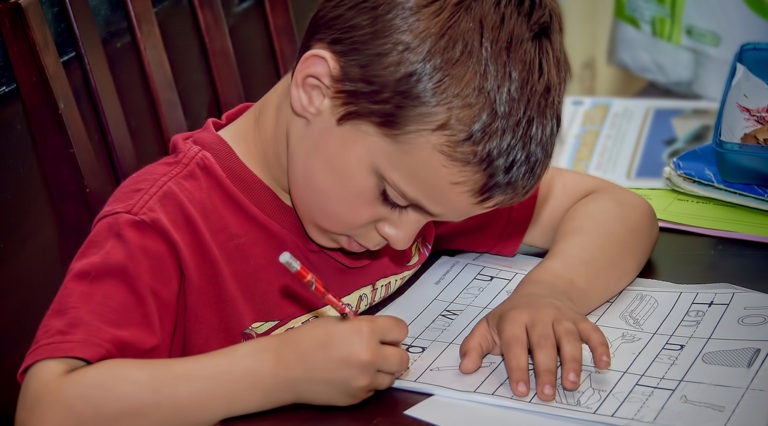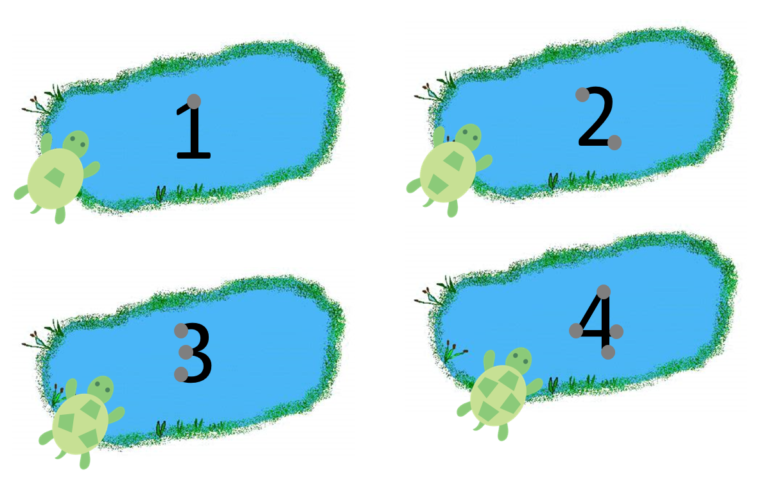Types of Challenging Behavior
There are so many types of challenging behaviors. We always talk about how important it is to build relationships with children, but let’s be real. Some children are just really hard to build relationships with.
My Story
When I first went back to school to get my early childhood degree, one of my professors went around the room and asked why we went into this field. Of course, most of the answers sounded something like, “I love children!” She proceeded to tell us that we better have another reason for going into this field because that one wasn’t good enough. We all looked at her like she had three heads! She proceeded to tell us that, of course, we should like children. But that alone will not sustain us through the challenging moments of being an early childhood teacher. She continued to say that one day we would find a child that we didn’t like, and then what? I thought that was just cruel. After all, they’re just small children. What could they possibly do that would make me not like them?
A Few Years Later
A few years later, I was teaching first grade. I found the kid I didn’t like. It pains me to say it, but I didn’t fancy her. Her behaviors were challenging, but that wasn’t why I didn’t have a soft spot for her. I could never quite put my finger on it. Perhaps our energies were conflicting, but I just didn’t like her. She, however, loved me. Which probably made my dislike of her even more potent. It was a challenging year. I tried to make sure that I was building a solid relationship with her despite my personal preferences. I tried my best to learn to like her. It didn’t work always work, but over the year, we did find some common ground. I can honestly say that she thrived in my classroom.
It Takes More than Liking Children to be a Good Teacher
No matter how much you may love children, the same thing will happen to you at some point. You’ll find the child that challenges every cell in your body. You’ll find the child that makes it hard to build those positive relationships. Your challenge, then, is to push forward and continue to find a way to make a connection. Because it’s only through a connection that learning occurs and behaviors change.
Types of Challenging Behaviors
Challenging Behavior can appear in many different ways. It is also highly subjective…what one caregiver considers challenging; another may not. The important thing to remember with any challenging behavior is that the child is trying to send you a message in the only way that he/she feels capable of at the time. When you can look for the message, it becomes easier to respond appropriately. In addition, responding properly can help you build healthy and positive relationships with the child. Stanley Greenspan talks about five specific types of challenging children.
Types of Challenging Behavior: The Highly Sensitive Child
Highly sensitive children tend to react more strongly to events than you might anticipate. Their world perceptions can be much more intense than the average child, and any type of change can be overwhelming to this child. They may be cautious, fearful, shy, worry a lot, or be anxious. As they grow, this may lead to moodiness, irritability, or depression. You might notice that highly sensitive children react more sensitively to touch, loud noises, bright lights, or change. They may also get easily overwhelmed by their own emotions.
Strategies for the Highly Sensitive Child:
- Prepare children for upcoming changes as far in advance as possible and limit the number of changes and transitions.
- Use picture schedules or visual schedules so the child can anticipate what will be coming up in his/her day.
- Provide gentle but firm limits.
- Tune in to the child’s sensory system. Remember, he cannot control how his body is processing sensory information! For example, if you notice the child reacting to bright lights, try dimming the lights in the classroom. If the child holds his hands over his ears at group time, give him a pair of headphones to wear.
- Help the child label and talk about his feelings. Validate what the child is feeling and show empathy towards him. Watch this video to learn more about using empathy for challenging behaviors.
Types of Challenging Behavior: The Self-Absorbed Child
The self-absorbed child is caught up in her own world. She tends to be quiet, quickly tired, shows little enthusiasm. You may find this child to be more passive and not as responsive as other children. Caregivers may need to show more spirit and effort to engage the child.
Strategies for the Self-Absorbed Child
- Be sensitive to the child’s natural energy level, and do not expect the child to enjoy the same activities that others may enjoy.
- Provide a quiet space where this child can get away from everyone for some alone time.
- Children in this category can have vivid imaginations. Provide them with an outlet for imaginary play such as puppets or dramatic play areas and props.
- Resist insisting that the child spend time with or be friends with the other children in the classroom. Instead, respect the child’s speed and preferences when establishing relationships or spending time with others.
Types of Challenging Behavior: The Defiant Child
We all probably have experience with the defiant child….the stubborn child, always trying to control, engaging in constant power struggles with those in charge. Rebellious children can swing from being avoidant and passively defiant to being angry and argumentative.
Strategies for the Defiant Child:
- Don’t take it personally. As hard as it is, try to avoid getting angry and administering punitive punishments, making the situation escalate.
- Avoid power struggles. The key to avoiding power struggles contains five elements:
- Say what you mean.
Avoid saying things to the child that you don’t mean just because you are upset. Choose your words wisely. - Mean what you say.
Make sure that you are only saying things that you plan to enforce. For example, telling a child that Santa Claus won’t come if they continue misbehaving isn’t typically something you mean. Be cautious when establishing limits and consequences. - Know what you can’t control.
As much as we’d like to think we can control everything, we can’t. We can’t control children’s eating, sleeping, and toileting, for instance. We can’t control it IF a child picks up a toy. So think carefully about whether you have control over what you want the child to do or if you wish you had control! - Know what you can control.
Think creatively about what you can control. For example, you may not be able to control whether the child picks up the toys, but you can control what choices are available to the child UNTIL those toys are picked up. - Follow through.
Make sure that you follow through on what you say you are going to do. Doing what you say builds trust with the child. State your limit and the consequence one time, and then follow through on the consequence you established.
- Say what you mean.
Types of Challenging Behavior: The Inattentive Child
This child is highly distractible. He tends to be restless, fidgety, always on the go, and may quickly shift his attention from one activity to the next. Caregivers may find the child rarely finishes an activity that he started.
Strategies for the Inattentive Child:
- Be sure that your space is not overwhelming with distractions. Avoid covering every wall with something decorative. Avoid hanging things from the ceiling as this can be a distraction as well. Choose carefully when putting things on the wall to avoid “visual clutter”.
- Provide the child with fidget toys during activities to help keep the child’s attention.
- Allow for lots of movement and breaks. Avoid asking the child to sit for long periods of time, and offer lots of opportunities for active play.
Types of Challenging Behavior: The Active Aggressive Child
The active, aggressive child tends to be more impulsive than most and may react physically to situations without even thinking. She may hit, punch, or kick to express her anger. As a result, she becomes frustrated more easily than most children and has difficulty controlling her impulses. You may also notice that she has less sensitivity to touch, pain, or sound.
Strategies for the Active Aggressive Child:
- Be as warm and nurturing as possible. It’s sometimes hard to show this type of care with these children, but the less warmth and nurturing an aggressive child gets, the more her aggressive behaviors increase.
- Provide firm structure and limits for the child. Establish boundaries and consequences, and be sure to follow through.
- Help the child to express her feelings in appropriate ways. For example, you may allow the child to push against a wall, squeeze a stress ball, or twist a towel when angry. However, avoid letting the child hit anything, even a punching bag or bean bag chair. Since the child has a hard time controlling impulses, she might not differentiate in the moment between what is ok to hit and what is not.
- Don’t give in to angry outbursts. If the child gets her way through this behavior, you have just reinforced that it works.
Conclusion
Challenging Behaviors can be frustrated for even the most experienced teacher. However, when you can examine the behavior closely and determine the type of challenging behavior, you will choose strategies that more closely target the child’s needs. I’ll leave you with this final quote by Ben Stein. “Relationships are the fertile soil from which all advancement, all success, and all achievement in real life grow.”
Want to Learn More About Challenging Behaviors?
The Psychology Behind Behaviors is a must-have class for all teachers and parents of young children. This unique workshop blends the worlds of psychology and early childhood to help you understand why children (and adults) behave the way they do. We’ll take a deep dive into classroom behavior and look at how the brain develops and influences behavior and typical reasons why children misbehave. Teachers will walk away with a better understanding of why the children are doing what they are doing as well as insights into their own reactions. We’ll discuss concrete strategies for helping children through challenging behaviors so that teachers feel equipped to handle the children in their classrooms. Geared towards anyone who works with children of any age.







